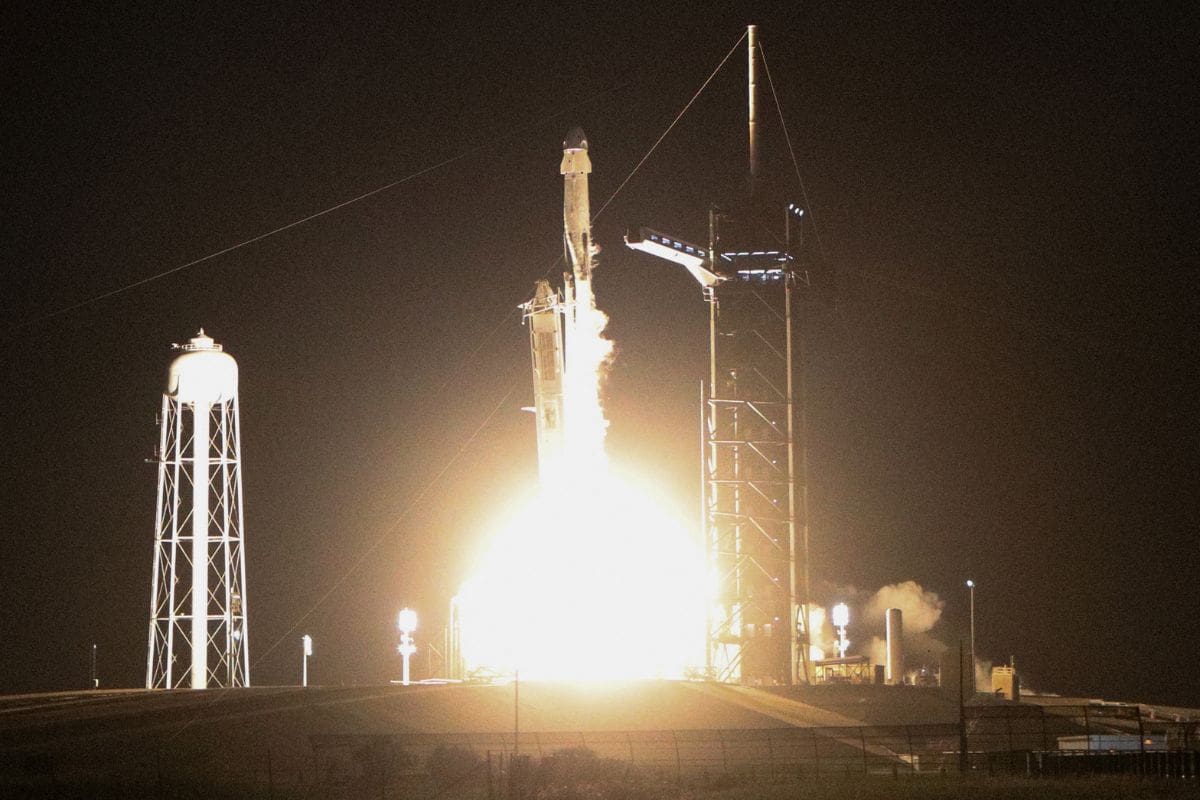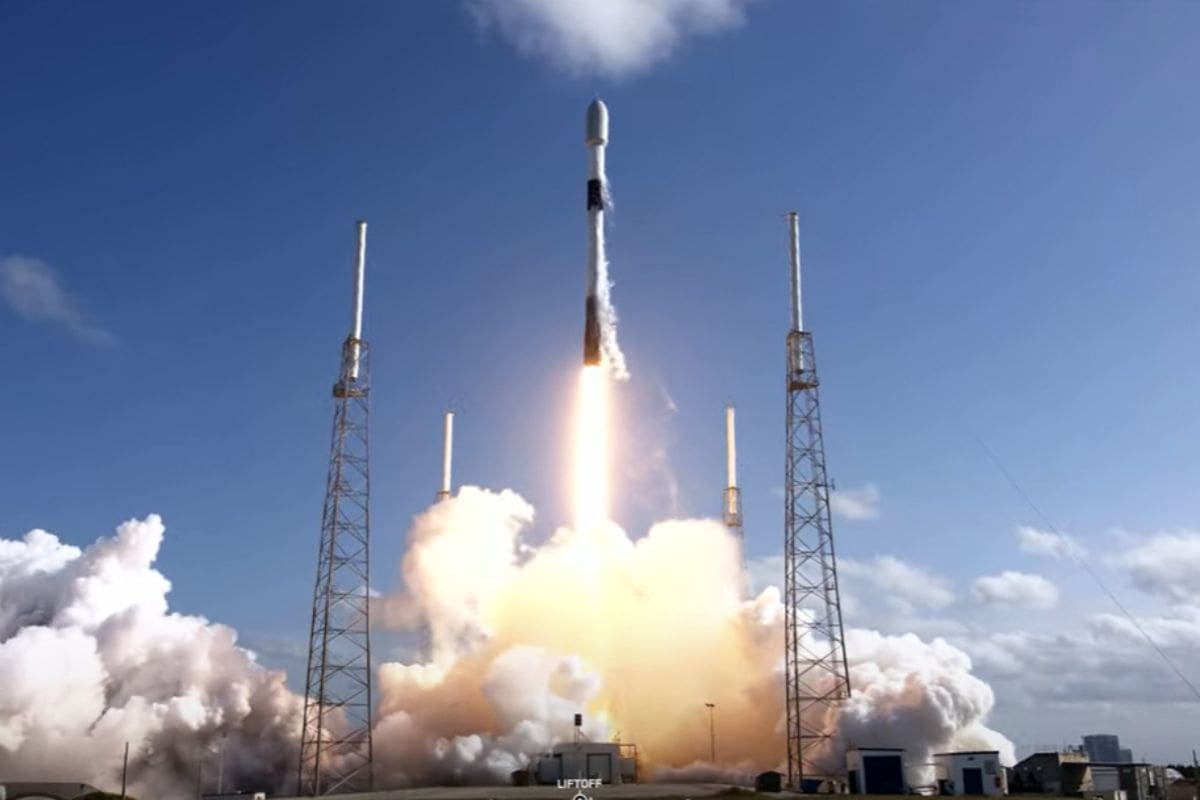SpaceX’s Falcon 9 Launch: SpaceX’s recent Falcon 9 launch marked another milestone in the company’s ambitious Starlink satellite project. With this latest launch, SpaceX aims to bolster its global internet coverage and expand its orbital network.
The launch, which lit up the skies over Southern California, showcased the Falcon 9’s reliability and versatility. However, beyond the impressive visuals and successful deployment, there are intriguing implications for the future of telecommunications and space exploration that warrant closer examination.
SpaceX Launch Lights Up Southern California Skies
The SpaceX launch that illuminated the Southern California skies with a spectacular display was a sight to behold. On this mission, the Falcon 9 rocket, launched from Vandenberg Air Force Base, carried 22 Starlink satellites into orbit. The night sky was transformed as the rocket swiftly ascended, leaving a trail of light in its wake. Spectators marveled at the breathtaking sight as the Falcon 9 pierced through the atmosphere, showcasing the technological prowess of SpaceX.
The brilliance of the rocket’s trajectory was accentuated by the darkness of the night, creating a stunning contrast that drew the attention of viewers far and wide. The flawless execution of the launch added to the allure of the event, solidifying SpaceX’s reputation for precision and innovation in the aerospace industry. As the Falcon 9 disappeared into the vast expanse of space, it left a lasting impression on all those fortunate enough to witness its journey.
Starlink Satellites Expand SpaceX’s Orbital Network
Expanding upon the successful launch that captivated viewers with its stunning display over Southern California, SpaceX is furthering its orbital network through the integration of additional Starlink satellites.
The primary goal of this mission was to incorporate 22 Starlink satellites into SpaceX’s existing network encircling Earth. Starlink, a project aimed at enhancing internet accessibility in remote areas, utilizes satellite-based internet services to bridge the connectivity gap.
With this successful deployment, SpaceX continues its mission to expand its satellite constellation, ultimately promising improved connectivity for underserved regions worldwide. By adding more satellites to its network, SpaceX increases the coverage and capacity of its internet services, making strides towards its vision of providing global high-speed internet access.
This expansion underscores SpaceX’s commitment to innovation and its dedication to revolutionizing the way people connect and communicate, especially in areas where traditional internet infrastructure is limited or unavailable.
Falcon 9’s 19th Flight and Ocean Landing
With its 19th flight completed, Falcon 9 executed a precise ocean landing on SpaceX’s droneship in the Pacific Ocean, showcasing the company’s commitment to reusability in space exploration. This mission marked a significant milestone as it was the 19th flight for the reusable first stage booster of the Falcon 9. Following the successful deployment of the Starlink satellites, the rocket’s secure landing on the droneship highlighted SpaceX’s dedication to making space travel more cost-effective through the reuse of rocket components.
The ability to recover and refurbish the first stage boosters is a vital aspect of SpaceX’s approach to revolutionizing space transportation. By landing the Falcon 9 booster on a droneship in the ocean, SpaceX continues to demonstrate its expertise in precision landing techniques, ensuring the safe return of valuable rocket components for future missions.
This successful ocean landing further solidifies SpaceX’s position as a leader in reusability efforts within the aerospace industry, setting the stage for more sustainable and economical space exploration endeavors.
Also Read: Breeze Airways Expands Charleston-California Flights!
News In Brief
SpaceX achieved a significant milestone with its Falcon 9 launch, advancing the Starlink satellite project to enhance global internet coverage. The dazzling launch, witnessed over Southern California, featured the deployment of 22 Starlink satellites into orbit, captivating spectators with its stunning display. This mission further expands SpaceX’s orbital network, contributing to improved connectivity in remote areas. Notably, Falcon 9’s 19th flight concluded with a precise ocean landing on SpaceX’s droneship, showcasing the company’s commitment to reusability in space exploration. The successful deployment and recovery underscore SpaceX’s dedication to innovation, promising a more cost-effective and sustainable future for space travel.
Our Reader’s Queries
How many Starlink satellites can Falcon 9 launch?
The upcoming SpaceX Falcon 9 rocket launch is set to deploy a group of 22 Starlink satellites, and you can catch the action on YouTube.
What is the purpose of SpaceX Falcon 9 rocket?
SpaceX’s Falcon 9, a two-stage rocket, is ingeniously crafted for the dependable and secure transportation of both people and payloads into Earth’s orbit and beyond. Notably, Falcon 9 proudly holds the title of the world’s inaugural orbital class reusable rocket.
How many more Starlink satellites does SpaceX intend to launch?
Plans are in motion to deploy approximately 12,000 satellites, with potential expansion to 42,000. SpaceX reported surpassing 1 million subscribers in December 2022, reaching 1.5 million in May 2023, and hitting 2 million in September 2023. Notably, Starlink played a significant role in the Russo-Ukrainian War.
How many Starlink satellites are in each launch?
Starlink initiates its launch phase with the deployment of the initial 1,440 satellites distributed across 72 orbital planes, consisting of 20 satellites each. Notably, this deployment incorporates a lower minimum elevation angle for beams, enhancing reception at 25° compared to the 40° utilized in the other two orbital shells.



